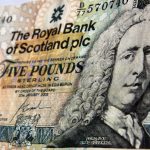What is HMRC’s New Debt Recovery Scheme?
Announced by George Osborne as part of his April 2014 budget, the Direct Recovery of Debt scheme has been billed as a way for HMRC to ensure it can claw back outstanding taxes from debtor bank accounts. Using new legislation, HMRC will be able to withdraw back taxes directly from individuals or businesses that are £1,000 or more in arrears.
The Direct Recovery of Debt (DRD) scheme was put out to public consultation between May and July of this year, but the results have yet to be published. It is unclear then exactly what the final system will look like, but initial suggestions are that there will be little deviation from the original proposals.
Key factors to be aware of:
- Only debtors owing £1,000 or more face direct debt recovery measures.
- HMRC will contact debtors in advance at least four times before any debt recovery action is taken.
- Payments will not be taken from those facing severe financial hardship, i.e. those with less than £5,000 in their accounts.
- HMRC has promised that every case will be rigorously reviewed before DRD action is authorised, including checking previous financial patterns to further limit the risk of pushing a person or business into serious financial hardship.
- Debtors will be given 14 further days to either arrange an alternative payment method, or to provide evidence of financial hardship. Funds matching the outstanding debt will be placed on hold by the bank during this period, but will not be transferred to HMRC until that time is up.
Obviously the key to avoiding DRD is to ensure that outstanding taxes are paid on time – speak to your accountant for further advice if you think you may have problems meeting your tax bill.



